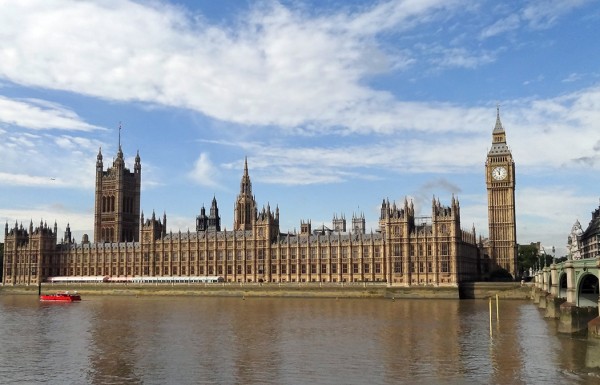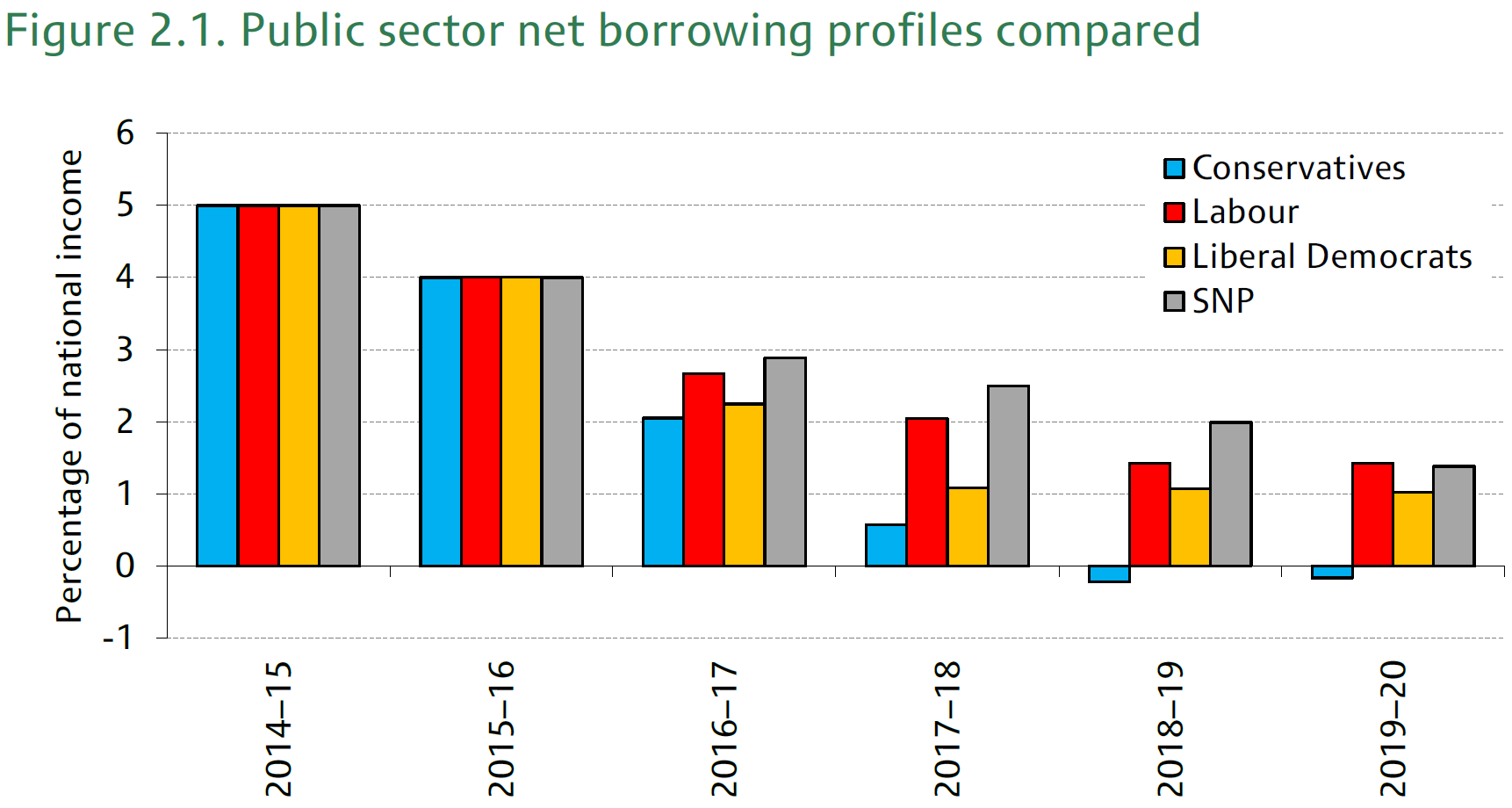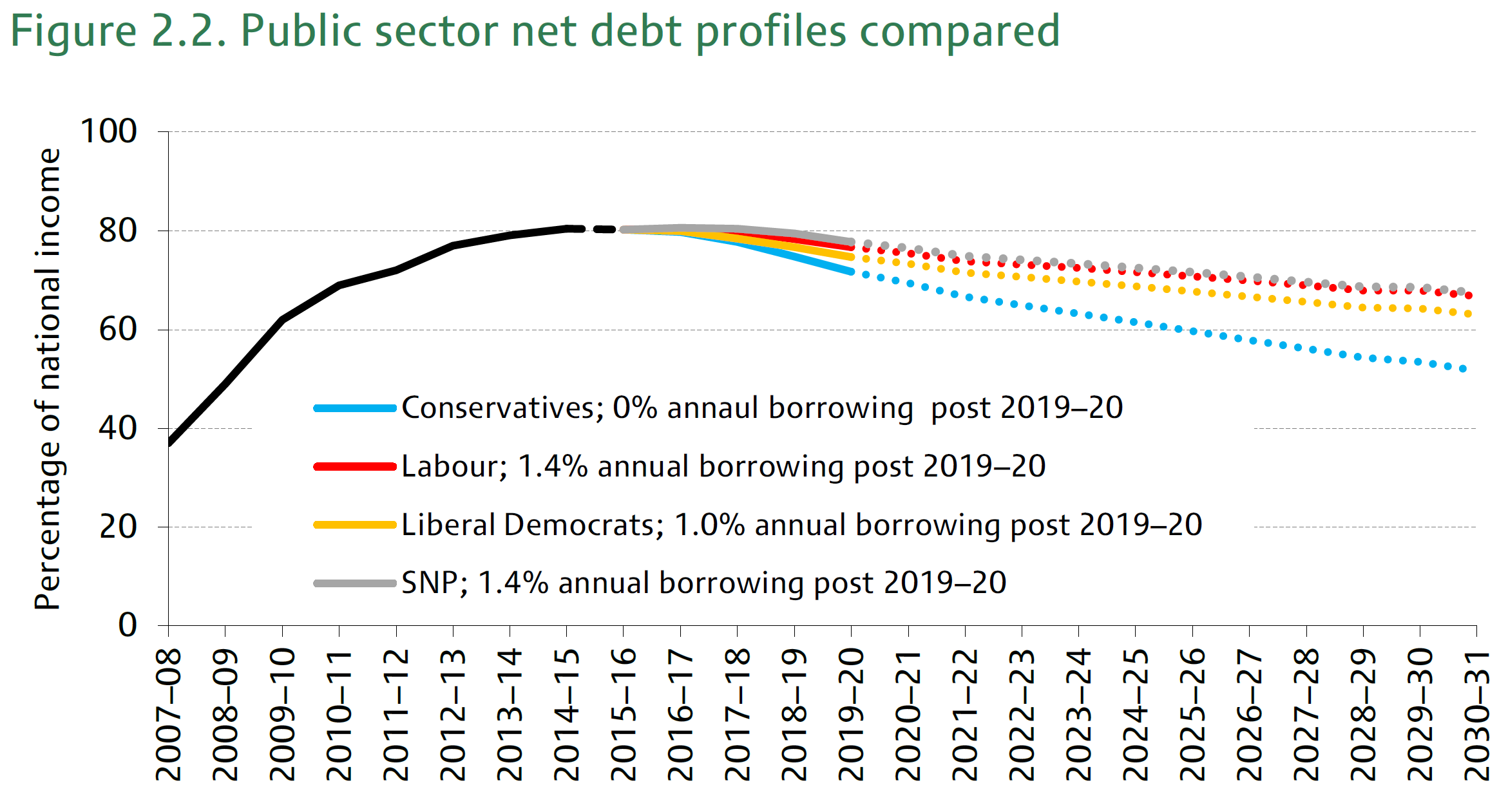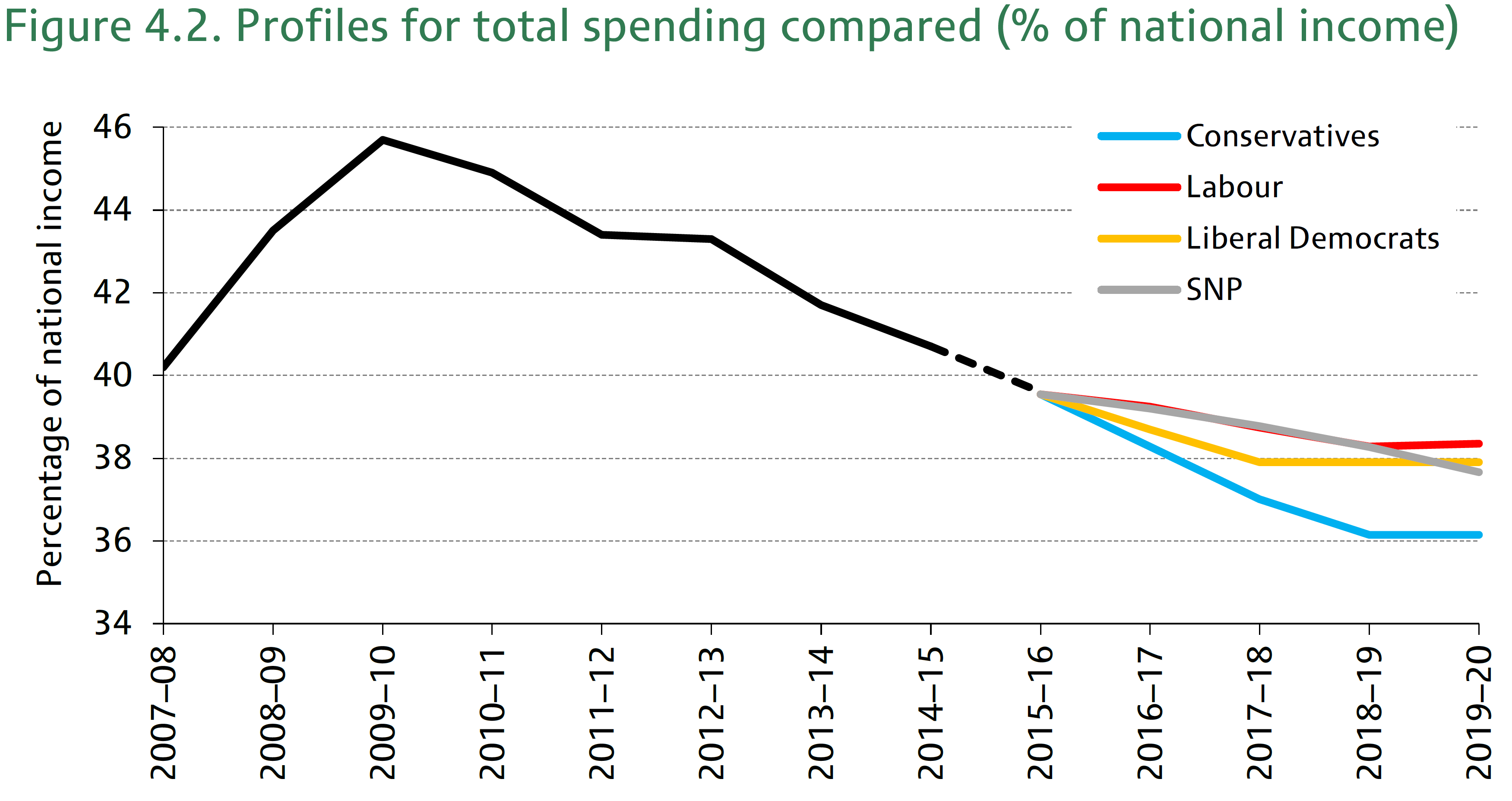 According to a new report, Time for Change published by the Institute for Public Policy Research (IPPR), ‘The British economic model needs fundamental reform.’
According to a new report, Time for Change published by the Institute for Public Policy Research (IPPR), ‘The British economic model needs fundamental reform.’
It is no longer generating rising earnings for a majority of the population, and young people today are set to be poorer than their parents. Beneath its headlines figures, the economy is suffering from deep and longstanding weaknesses, which make it unfit to face the challenges of the 2020s.
The report by the IPPR’s Commission on Economic Justice is an interim one, with the final report due in the latter part of next year. The commission was set up in 2016 and includes business leaders, such as the heads of John Lewis and Siemens, the TUC General Secretary, the Archbishop of Canterbury and other leading figures.
Commenting on the interim report, Justin Welby, the Archbishop of Canterbury said
Our economic model is broken. Britain stands at a watershed moment where we need to make fundamental choices about the sort of economy we need. We are failing those who will grow up into a world where the gap between the richest and poorest parts of the country is significant and destabilising
The report found that wages have stagnated for the majority of the population since the financial crisis of 2007/8. Wage income has fallen as a proportion of national income, while the proportions going to income from profits and property have risen. Young people are poorer than previous generations of young people.
Despite low unemployment, many people are on zero-hour contracts, part-time contracts or employed on a casual basis. For many, their jobs are insecure and they have no bargaining power.
 The UK for many years has had a lower rate of investment that other developed economies and productivity, in terms of output per hour, is the lowest of its major competitors. Productivity in Germany is 36% higher than in the UK; in France and the USA it is 29% higher. Although there are some internationally competitive UK firms with high productivity, the country has:
The UK for many years has had a lower rate of investment that other developed economies and productivity, in terms of output per hour, is the lowest of its major competitors. Productivity in Germany is 36% higher than in the UK; in France and the USA it is 29% higher. Although there are some internationally competitive UK firms with high productivity, the country has:
a longer ‘tail’ of low-productivity businesses, in which weak management and poor use of skills leads to ‘bad jobs’ and low wages.
There are many other challenges, including an ageing population, uncertainties from Brexit, a large current account deficit, increased competition from abroad and growth once more in private-sector debt, which means that consumption may cease to be the main driver of economic growth as people seek to curb their borrowing.
The report is also critical of fiscal policy, which with record low interest rates could have been used to finance infrastructure projects as well as supporting public services.
The report recommends three approaches:
The first is institutional reform to support investment.
The second is making the economy more competitive through a coherent industrial strategy, reform of the financial sector to support long-term investment, reform of corporate governance to promote business success and tackling the market dominance of companies such as Amazon and Google.
The third is to bring greater social justice and equality through encouraging more secure and better-paid jobs, strengthening trades unions and reforming the tax system to make it fairer and smarter.
Not surprisingly the government has defended its record of reducing debt, presiding over falling unemployment and reduced inequality as measured by a reduced Gini coefficient. However, there has only been a modest fall in the Gini coefficient, from 0.333 in 2009/10 to 0.315 in 2016/7, and this has largely been the result of the very rich seeing a decline in income from assets.
Articles
Britain’s economy is broken and failing to tackle inequality, says major new report Independent, Ben Chu (6/9/17)
UK’s economic model is broken, says Archbishop of Canterbury The Guardian, Phillip Inman (5/9/17)
Tax wealth or see the UK tear itself apart, Cable will warn Bloomberg, Alex Morales and Thomas Penny (6/9/17)
Archbishop of Canterbury calls for radical economic reform BBC News (5/9/17)
Archbishop warns economy is “broken” as report reveals longest period of wage stagnation for 150 years Huffington Post, Rachel Wearmouth (6/9/17)
Britain’s economy is broken. We desperately need new ideas The Guardian, Tom Kibasi (4/6/17)
Carney: Britain is in the ‘first lost decade since the 1860s’, Business Insider, Oscar Williams-Grut (6/12/16)
Our broken economy, in one simple chart New York Times, David Leonhardt (7/8/16)
Report
Time for Change: A new Vision for the British Economy IPPR Commission on Economic Justice (6/9/17)
Questions
- Why have wages for the majority of the UK population stagnated for the past 10 years?
- Why is productivity in the UK lower than in most other developed economies?
- Is it possible for poor people to become poorer and yet for the Gini coefficient to fall?
- What institutional reforms would you suggest to encourage greater investment?
- Explain the possible advantages and disadvantages of abandoning ‘austerity policy’ and adopting a more expansionist fiscal stance?
- Does it matter that Amazon and Google are dominant players in their respective markets? Explain.
 The article below looks at the economy of Brazil. The statistics do not look good. Real output fell last year by 3.8% and this year it is expected to fall by another 3.3%. Inflation this year is expected to be 9.0% and unemployment 11.2%, with the government deficit expected to be 10.4% of GDP.
The article below looks at the economy of Brazil. The statistics do not look good. Real output fell last year by 3.8% and this year it is expected to fall by another 3.3%. Inflation this year is expected to be 9.0% and unemployment 11.2%, with the government deficit expected to be 10.4% of GDP.
The article considers Keynesian economics in the light of the case of Brazil, which is suffering from declining potential supply, but excess demand. It compares Brazil with the case of most developed countries in the aftermath of the financial crisis. Here countries have suffered from a lack of demand, made worse by austerity policies, and only helped by expansionary monetary policy. But the effect of the monetary policy has generally been weak, as much of the extra money has been  used to purchase assets rather than funding a growth in aggregate demand.
used to purchase assets rather than funding a growth in aggregate demand.
Different policy prescriptions are proposed in the article. For developed countries struggling to grow, the solution would seem to be expansionary fiscal policy, made easy to fund by lower interest rates. For Brazil, by contrast, the solution proposed is one of austerity. Fiscal policy should be tightened. As the article states:
Spending restraint might well prove painful for some members of Brazilian society. But hyperinflation and default are hardly a walk in the park for those struggling to get by. Generally speaking, austerity has been a misguided policy approach in recent years. But Brazil is a special case. For now, anyway.
The tight fiscal policies could be accompanied by supply-side policies aimed at reducing bureaucracy and inefficiency.
Article
Brazil and the new old normal: There is more than one kind of economic mess to be in The Economist, Free Exchange Economics (12/10/16)
Questions
- Explain what is meant by ‘crowding out’.
- What is meant by the ‘liquidity trap’? Why are many countries in the developed world currently in a liquidity trap?
- Why have central banks in the developed world found it difficult to stimulate growth with policies of quantitative easing?
- Under what circumstances would austerity policies be valuable in the developed world?
- Why is crowding out of fiscal policy unlikely to occur to any great extent in Europe, but is highly likely to occur in Brazil?
- What has happened to potential GDP in Brazil in the past couple of years?
- What is meant by the ‘terms of trade’? Why have Brazil’s terms of trade deteriorated?
- What sort of policies could the Brazilian government pursue to raise growth rates? Are these demand-side or supply-side policies?
- Should Brazil pursue austerity policies and, if so, what form should they take?
 In an attempt to prevent recession following the financial crisis of 2007–8, many countries adopted both expansionary monetary policy and expansionary fiscal policy – and with some success. It is likely that the recession would have been much deeper without such policies
In an attempt to prevent recession following the financial crisis of 2007–8, many countries adopted both expansionary monetary policy and expansionary fiscal policy – and with some success. It is likely that the recession would have been much deeper without such policies
But with growing public-sector deficits caused by the higher government expenditure and sluggish growth in tax receipts, many governments soon abandoned expansionary fiscal policy and relied on a mix of loose monetary policy (with ultra low interest rates and quantitative easing) but tight fiscal policy in an attempt to claw down the deficits.
But such ‘austerity’ policies made it much harder for loose monetary policy to boost aggregate demand. The problem was made worse by the attempt of both banks and individuals to ‘repair’ their balance sheets. In other words banks became more cautious about lending, seeking to build up reserves; and many individuals sought to reduce their debts by cutting down on spending. Both consumer spending and investment were slow to grow.
And yet government and central banks, despite the arguments of Keynesians, were reluctant to abandon their reliance solely on monetary policy as a means of boosting aggregate demand. But gradually, influential international institutions, such as the IMF (see also) and World Bank, have been arguing for an easing of austerity fiscal policies.
 The latest international institution to take a distinctly more Keynesian stance has been the Organisation for Economic Co-operation and Development (OECD). In its November 2015 Economic Outlook it had advocated some use of public-sector investment (see What to do about slowing global growth?. But in its Interim Economic Outlook of February 2016, it goes much further. It argues that urgent action is needed to boost economic growth and that this should include co-ordinated fiscal policy. In introducing the report, Catherine L Mann, the OECD’s Chief Economist stated that:
The latest international institution to take a distinctly more Keynesian stance has been the Organisation for Economic Co-operation and Development (OECD). In its November 2015 Economic Outlook it had advocated some use of public-sector investment (see What to do about slowing global growth?. But in its Interim Economic Outlook of February 2016, it goes much further. It argues that urgent action is needed to boost economic growth and that this should include co-ordinated fiscal policy. In introducing the report, Catherine L Mann, the OECD’s Chief Economist stated that:
“Across the board there are lower interest rates, except for the United States. It allows the authorities to undertake a fiscal action at very very low cost. So we did an exercise of what this fiscal action might look like and how it can contribute to global growth, but also maintain fiscal sustainability, because this is an essential ingredient in the longer term as well.
 So we did an experiment of a two-year increase in public investment of half a percentage point of GDP per annum undertaken by all OECD countries. This is an important feature: it’s everybody doing it together – it’s a collective action, because it’s global growth that is at risk here – our downgrades [in growth forecasts] were across the board – they were not just centred on a couple of countries.
So we did an experiment of a two-year increase in public investment of half a percentage point of GDP per annum undertaken by all OECD countries. This is an important feature: it’s everybody doing it together – it’s a collective action, because it’s global growth that is at risk here – our downgrades [in growth forecasts] were across the board – they were not just centred on a couple of countries.
So what is the effect on GDP of a collective fiscal action of a half a percentage point of GDP [increase] in public investment in [high] quality projects. In the United States, the euro area, Canada and the UK, who are all contributors to this exercise, the increase in GDP is greater than the half percentage point [increase] in public expenditure that was undertaken. Even if other countries don’t undertake any fiscal expansion, they still get substantial increases in their growth rates…
Debt to GDP in fact falls. This is because the GDP effect of quality fiscal stimulus is significant enough to raise GDP (the denominator in the debt to GDP ratio), so that the overall fiscal sustainability [debt to GDP] improves.”
What is being argued is that co-ordinated fiscal policy targeted on high quality infrastructure spending will have a multiplier effect on GDP. What is more, the faster growth in GDP should outstrip the growth in government expenditure, thereby allowing debt/GDP ratios to fall, not rise.
This is a traditional Keynesian approach to tackling sluggish growth, but accompanied by a call for structural reforms to reduce inefficiency and waste and improve the supply-side of the economy.
Articles
Osborne urged to spend more on infrastructure by OECD Independent, Ben Chu (18/2/16)
OECD blasts reform fatigue, downgrades growth and calls for more rate cuts Financial Review (Australia), Jacob Greber (18/2/16)
OECD calls for less austerity and more public investment The Guardian, Larry Elliott (18/2/15)
What’s holding back the world economy? The Guardian, Joseph Stiglitz and Hamid Rashid (8/2/16)
OECD calls for urgent action to combat flagging growth Financial Times, Emily Cadman (18/2/16)
Central bankers on the defensive as weird policy becomes even weirder The Guardian, Larry Elliott (21/2/16)
Keynes helped us through the crisis – but he’s still out of favour The Guardian, Larry Elliott (7/2/16)
G20 communique says monetary policy alone cannot bring balanced growth
Reuters (27/2/15)
OECD publications
 Global Economic Outlook and Interim Economic Outlook OECD, Catherine L Mann (18/2/16)
Global Economic Outlook and Interim Economic Outlook OECD, Catherine L Mann (18/2/16)
Interim Economic Outlook OECD (18/2/16)
Questions
- Draw an AD/AS diagram to illustrate the effect of a successful programme of public-sector infrastructure projects on GDP and prices.
- Draw a Keynesian 45° line diagram to illustrate the effect of a successful programme of public-sector infrastructure projects on actual and potential GDP.
- Why might an individual country benefit more from a co-ordinated expansionary fiscal policy of all OECD countries rather than being the only country to pursue such a policy?
- What determines the size of the multiplier effect of such policies?
- How might a new classical/neoliberal economist respond to the OECD’s recommendation?
- Why may monetary policy have ‘run out of steam’? Are there further monetary policy measures that could be adopted?
- Compare the relative effectiveness of increased government investment in infrastructure and tax cuts as alterative forms of expansionary fiscal policy.
- Should quantitative easing be directed at financing public-sector infrastructure projects? What are the benefits and problems of such a policy? (See the blog post People’s quantitative easing.)
 In their manifestos, the parties standing for the UK general election on May 7th state their plans for fiscal policy and, more specifically, for reducing public-sector net borrowing and public-sector net debt. The degree of detail in the plans varies, especially with regards to where cuts will be made, but there are nevertheless some very clear differences between the parties.
In their manifestos, the parties standing for the UK general election on May 7th state their plans for fiscal policy and, more specifically, for reducing public-sector net borrowing and public-sector net debt. The degree of detail in the plans varies, especially with regards to where cuts will be made, but there are nevertheless some very clear differences between the parties.
The Institute for Fiscal Studies has examined the public finance plans of the Conservatives, Labour, Liberal Democrats and SNP and has published a briefing note (see link below) and an accompanying press release. It accuses all four parties’ plans of being short on detail over specific cuts (especially the Conservatives), and over borrowing requirements (especially Labour):
None of these parties has provided anything like full details of their fiscal plans for each year of the coming parliament, leaving the electorate somewhat in the dark as to both the scale and composition of likely spending cuts and tax increases. In our analysis we have used the information provided in each manifesto, plus in some cases some necessary assumptions, to shed light on the four parties’ plans.
But despite the lack of detail, the IFS claims that there are big differences in the parties’ plans. These are illustrated in the following three charts from the IFS Briefing Note.



According to Carl Emmerson, IFS deputy director:
“There are genuinely big differences between the main parties’ fiscal plans. The electorate has a real choice, although it can at best see only the broad outlines of that choice. Conservative plans involve a significantly larger reduction in borrowing and debt than Labour plans. But they are predicated on substantial and almost entirely unspecified spending cuts and tax increases. While Labour has been considerably less clear about its overall fiscal ambitions its stated position appears to be consistent with little in the way of further spending cuts after this year”.
So what would be the implications of the plans of the various parties for fiscal policy and what, in turn, would be the implications for economic growth and investment? The various videos and articles look at the briefing note and at what is missing from the parties’ plans.
Videos
 Voters ‘in the dark’ over budgets BBC News, Robert Peston (23/4/15)
Voters ‘in the dark’ over budgets BBC News, Robert Peston (23/4/15)
 Election 2015: Main parties respond to IFS deficit claims BBC News, James Landale (23/4/15)
Election 2015: Main parties respond to IFS deficit claims BBC News, James Landale (23/4/15)
 Election 2015: ‘Not enough detail’ on deficit cut plans, says IFS BBC News, Paul Johnson (23/4/15)
Election 2015: ‘Not enough detail’ on deficit cut plans, says IFS BBC News, Paul Johnson (23/4/15)
 IFS: Electorate ‘left in the dark’ by political parties ITV News, Chris Ship (23/4/15)
IFS: Electorate ‘left in the dark’ by political parties ITV News, Chris Ship (23/4/15)
 Voters Left In Dark Over Spending Cuts, Says IFS Sky News (23/4/15)
Voters Left In Dark Over Spending Cuts, Says IFS Sky News (23/4/15)
 Post-election austerity: parties’ plans compared Institute for Fiscal Studies, Press Briefing (23/5/15)
Post-election austerity: parties’ plans compared Institute for Fiscal Studies, Press Briefing (23/5/15)
Articles
IFS: election choice is stark Economia, Oliver Griffin (23/4/15)
Election 2015: Voters ‘left in the dark’, says IFS BBC News (23/4/15)
The huge choice for voters BBC News, Robert Peston (23/4/15)
IFS manifesto analysis: fantasy island of Tory deficit reduction plan The Guardian, Larry Elliott (23/4/15)
Tories have £30bn black hole in spending plans, says IFS The Guardian, Heather Stewart (23/4/15)
Ed Miliband will leave Britain an extra £90bn in debt, IFS finds The Telegraph, Steven Swinford (23/4/15)
IFS despairs as it finds no party’s imaginary numbers add up The Guardian, John Crace (23/4/15)
Reality Check: Why should we trust the IFS? BBC News, Sebastian Chrispin (23/4/15)
IFS: Households can expect lower incomes, whoever wins the election BBC News, Brian Milligan (28/4/15)
Briefing Notes
Post-election Austerity: Parties’ Plans Compared Institute for Fiscal Studies, Briefing Note BN170, Rowena Crawford, Carl Emmerson, Soumaya Keynes and Gemma Tetlow (April 15)
Taxes and Benefits: The Parties’ Plans Institute for Fiscal Studies, Briefing Notw BN 172, Stuart Adam, James Browne, Carl Emmerson, Andrew Hood, Paul Johnson, Robert Joyce, Helen Miller, David Phillips, Thomas Pope and Barra Roantree (April 2015)
Questions
- What detail is missing about cuts in the Conservative plans?
- What detail is missing in the Labour plans on borrowing requirements?
- How do (a) the Liberal Democrat plans and (b) the SNP plans differ from Conservative and Labour plans?
- Find out the public finances plans of (a) the Green Party; (b) UKIP; and (c) Plaid Cymru. How different are these plans from those of other parties?
- Define ‘austerity’.
- How would a tightening of fiscal policy affect economic growth (a) in the short term; (b) in the long term?
- How would an expansion of the economy affect the budget balance through automatic fiscal stabilisers?
- What is meant by the structural deficit? How could this be reduced?
- Would the structural deficit be affected by austerity policies and the resulting size of the output gap, or is it independent of such policies? Explain.
 After Syriza’s dramatic victory in the Greek election, it is now seeking to pursue its manifesto promises of renegotiating the terms of Greece’s bailout and bringing an end to austerity policies.
After Syriza’s dramatic victory in the Greek election, it is now seeking to pursue its manifesto promises of renegotiating the terms of Greece’s bailout and bringing an end to austerity policies.
The bailout of €240bn largely involved debt restructuring to give Greeks more time to pay. A ‘haircut’ (reduction) on privately held bonds, estimated to be somewhere between €50bn and €110bn, was more than offset by an increase of €130bn in loans granted by official creditors.
The terms of the bailout negotiated with the ‘Troika’ of the EU Commission, the ECB and the IMF, had forced the previous Greek government to make substantial fiscal adjustments. These have included large-scale cuts in government expenditure (including public-sector wages), increases in taxes, charges and fares, and selling state assets through an extensive programme of privatisation.
Although Greece is now regarded as having achieved a structural budget surplus (a surplus when the economy is operating at potential output: i.e. with a zero output gap),  the austerity policies and a decline in inward investment have dampened the economy so much that, until last year, the actual budget deficit and public-sector debt continued to rise as tax revenues plummeted.
the austerity policies and a decline in inward investment have dampened the economy so much that, until last year, the actual budget deficit and public-sector debt continued to rise as tax revenues plummeted.
Since 2007, GDP has fallen by nearly 27% and the unemployment rate is around 26%. The fall in GDP has made the achievement of a reduction in the debt/GDP ratio that much harder. General government debt has risen from 103% of GDP in 2007 to 176% in 2014, and the budget deficit, although having peaked at 12.2% of GDP in 2013, has only been brought down through huge cuts.
As a report to the European Parliament from the Economic Governance Support Unit argues on page 27:
With less front-loaded fiscal adjustment, the EU-IMF financing envelope for Greece would have needed to expand, in what is already the largest financial assistance programme in percent of GDP in recent global history. On the other hand, a less rapid fiscal adjustment may have helped to preserve some of the productive capacity that, in the course of the adjustment, was destroyed.
The new government, although pledging not to default on debt, is insistent on renegotiating the debt and wants to achieve a high level of rescheduling and debt forgiveness. As the new Prime Minister, Alexis Tsipras, says:
On existing loans, we demand repayment terms that do not cause recession and do not push the people to more despair and poverty. We are not asking for new loans; we cannot keep adding debt to the mountain.
But, just as the Greek government is insistent on renegotiating its debt, so the German government and others in the EU are insisting that Greece sticks to the terms of the bailout and carries on with its current programme of debt reduction. Another haircut, they maintain, is out of the question.
We must wait to see how the negotiations play out. We are in the realms of game theory with various possible threats and promises on either side. It will be interesting to how these threats and promises are deployed.
New Leader in Greece Now Faces Creditors New York Times, Liz Alderman (26/1/15)
Syriza’s historic win puts Greece on collision course with Europe The Guardian, Ian Traynor and Helena Smith (26/1/15)
Greece Q&A: what now for Syriza and EU austerity? The Guardian, Phillip Inman (26/1/15)
Greek elections: Syriza gives eurozone economic headache BBC News, Prof Dimitri Mardas (26/1/15)
How a Syriza government would approach the eurozone The Telegraph, Andrew Lilico (19/1/15)
Australian economists urge Greek debt forgiveness as Syriza election win looks likely ABC News, Michael Janda (26/1/15)
Will Syriza win rock the global economy? CBS News, Nick Barnets (26/1/15)
Syriza should ignore calls to be responsible Irish Times. Paul Krugman (27/1/15)
Syriza Victory in Greek Election Roils European Debate Over Austerity Wall Street Journal, Marcus Walker (25/1/14)
Greece markets hit by debt default fears BBC News (28/1/15)
Why Europe Will Cave to Greece Bloomberg, Clive Crook (29/1/15)
Greece and the euro: Take the money and run The Economist, Buttonwood (28/1/15)
Tanking markets send dire warning to Greece’s new government Fortune, Geoffrey Smith (28/1/15)
The biggest debt write-offs in the history of the world The Telegraph, Mehreen Khan (2/2/15)
Questions
- Why has Greek debt continued to rise despite extremely tight fiscal policy?
- How is the structural deficit defined? What difficulties arise in trying to measure its size?
- Would there have been any way of substantially reducing the Greek budget deficit without driving Greece into a deep recession?
- What are the arguments for and against cancelling a large proportion of Greek debt? Is there a moral hazard involved here?
- Will the recently announced ECB quantitative easing programme help to reduce Greece’s debt?
- Are negotiations about debt forgiveness a zero sum game? Explain.
- What are the likely impacts of the Syriza victory on the global economy?
 According to a new report, Time for Change published by the Institute for Public Policy Research (IPPR), ‘The British economic model needs fundamental reform.’
According to a new report, Time for Change published by the Institute for Public Policy Research (IPPR), ‘The British economic model needs fundamental reform.’ The UK for many years has had a lower rate of investment that other developed economies and productivity, in terms of output per hour, is the lowest of its major competitors. Productivity in Germany is 36% higher than in the UK; in France and the USA it is 29% higher. Although there are some internationally competitive UK firms with high productivity, the country has:
The UK for many years has had a lower rate of investment that other developed economies and productivity, in terms of output per hour, is the lowest of its major competitors. Productivity in Germany is 36% higher than in the UK; in France and the USA it is 29% higher. Although there are some internationally competitive UK firms with high productivity, the country has:










